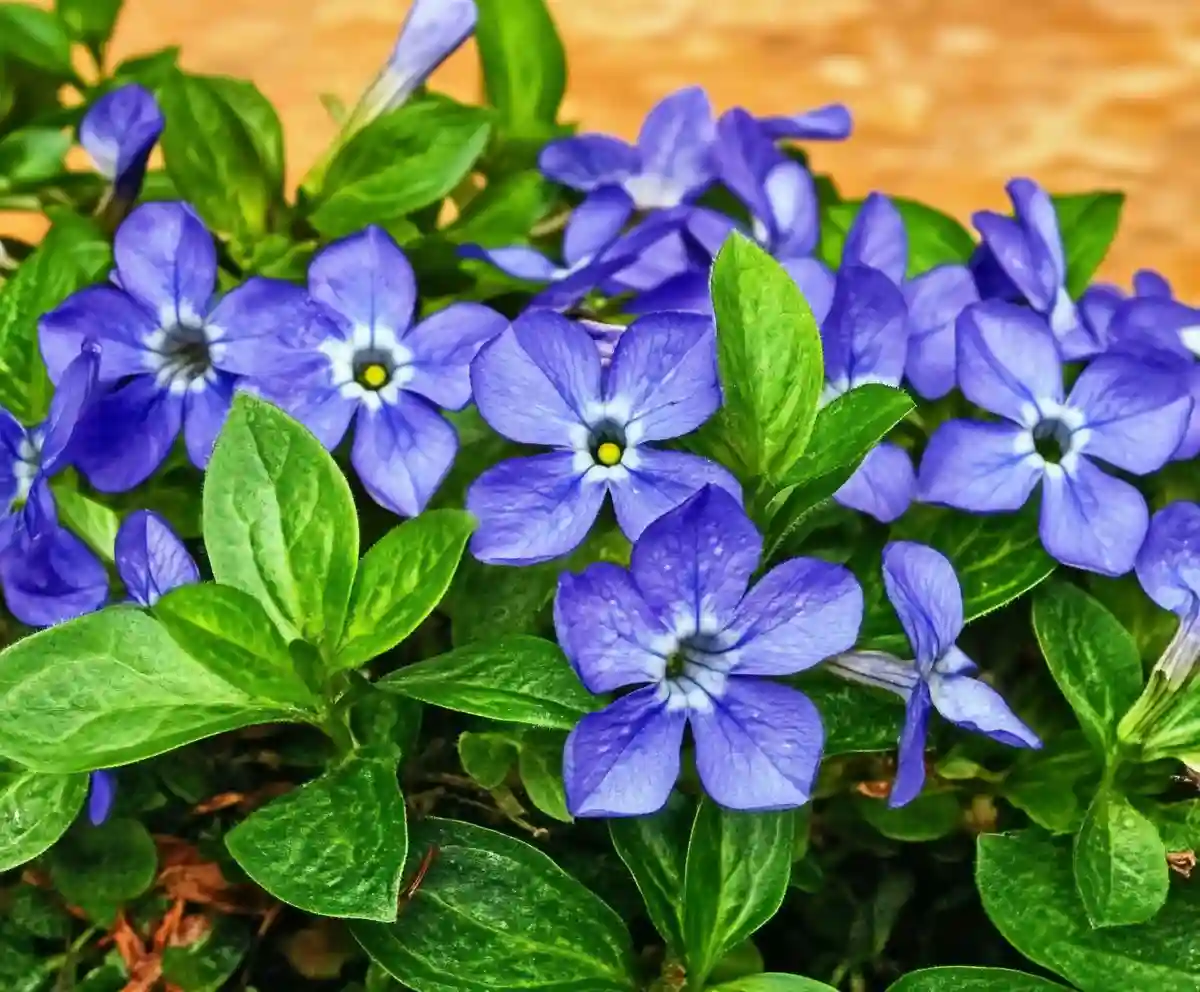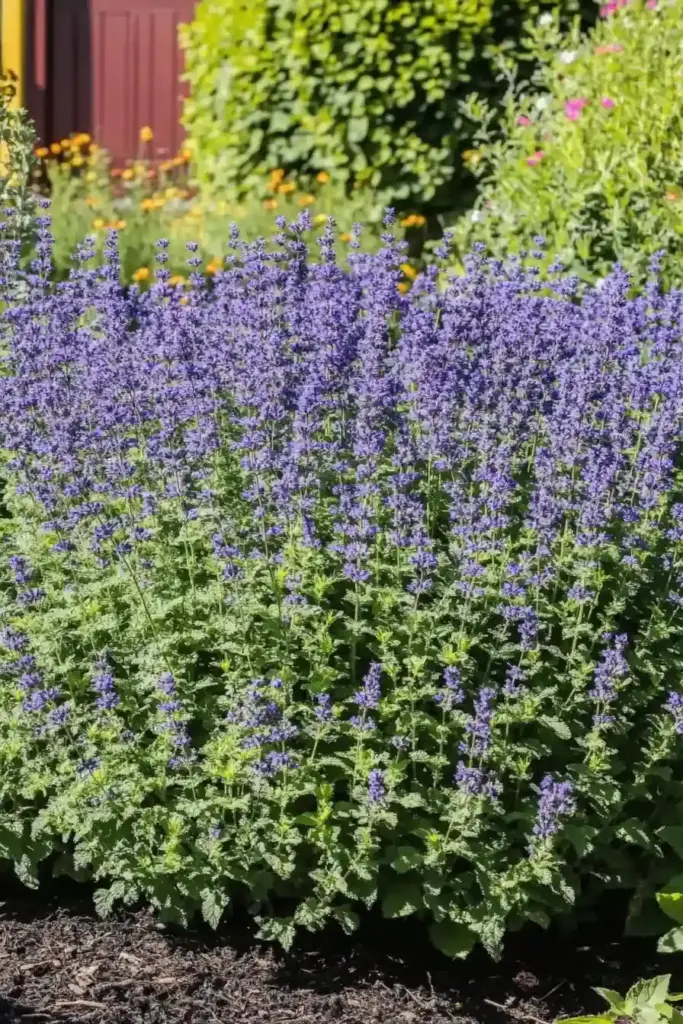If you’re dreaming of a lush, low-maintenance garden that practically takes care of itself, fast-growing perennials might just be your secret weapon. These vigorous plants don’t just bring beauty and color to your yard—they work overtime to outcompete weeds and cover bare soil quickly. Acting like living mulch, they smother unwanted plants, conserve moisture, and even attract beneficial pollinators.
Whether you’re a seasoned green thumb or just getting started, incorporating a few of these hardworking perennials into your landscape can drastically cut down your weeding time. Plus, once they’re established, they need very little attention—making them ideal for busy gardeners or those looking to create a more sustainable garden space.
🌸 1. Catmint (Nepeta spp.)
Catmint is a resilient perennial that’s beloved by pollinators—and gardeners looking to cut down on maintenance. With its soft, gray-green leaves and clusters of blue to purple flowers, it brings both color and texture to your garden beds. But beyond its beauty, catmint excels at suppressing weeds by forming thick, mounding clumps that quickly fill in bare spots.
Its fragrant foliage also helps deter pests, while its long bloom period provides months of visual interest. Catmint is especially useful along borders or in mass plantings where it can spread freely and choke out unwanted growth.
🌞 Planting Tips for Catmint:
- Sun exposure: Full sun to part shade
- Soil: Well-draining; tolerates poor or rocky soils
- Water needs: Drought-tolerant once established
- Mature height: 1 to 3 feet
- Spread: 1 to 3 feet
Catmint is an ideal choice for xeriscaping, cottage gardens, or any spot where you want a tough, beautiful plant that won’t let weeds take over.
🌼 2. Daylily (Hemerocallis spp.)
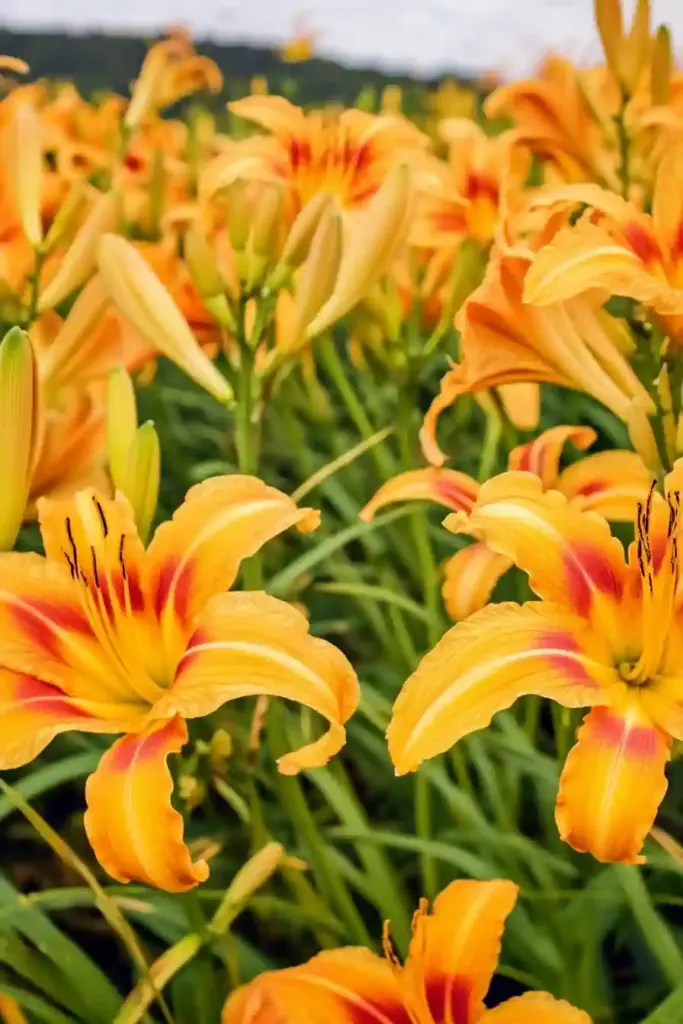
Daylilies are the ultimate no-fuss perennial—tough, adaptable, and stunningly beautiful. Known for their strappy green foliage and vibrant, trumpet-shaped blooms, these plants grow in dense clumps that naturally block out weeds. Their ability to spread quickly makes them a favorite for filling large garden beds or neglected corners of the yard.
Despite the name, each flower only lasts a day—but don’t worry, each plant produces dozens (even hundreds) of blooms across the season. And with so many varieties to choose from, you can enjoy a rainbow of colors from early summer to fall.
🌞 Planting Tips for Daylilies:
- Sun exposure: Full sun to part shade
- Soil: Very adaptable; prefers well-drained soil
- Water needs: Moderate; can tolerate brief dry spells
- Mature height: 1 to 6 feet (depending on variety)
- Spread: 1 to 4 feet
These reliable bloomers are perfect for borders, slopes, and mass plantings—and their lush growth ensures weeds won’t stand a chance.
💜 3. Russian Sage (Perovskia atriplicifolia)
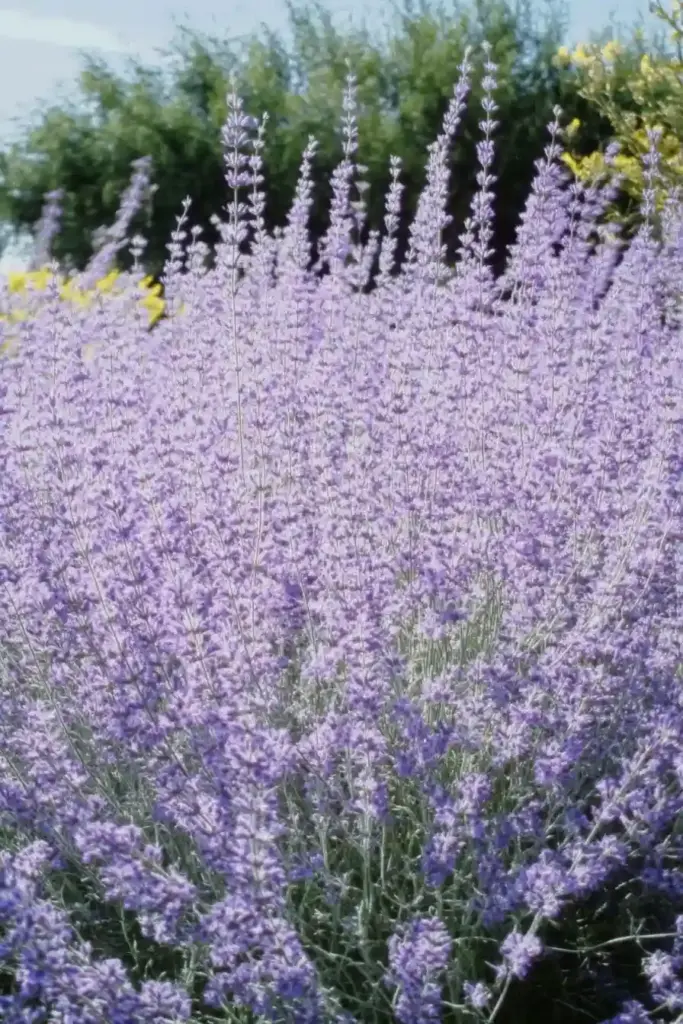
Russian sage brings drama and drought-tolerance to your garden with its silvery foliage and clouds of lavender-blue flowers. This upright perennial thrives in hot, dry conditions where many other plants struggle, making it a go-to for tough spots with full sun and poor soil.
Its bushy habit spreads quickly, filling gaps and preventing weeds from getting a foothold. Better yet, it blooms for months and attracts pollinators like bees and butterflies, all while asking for very little in return.
🌞 Planting Tips for Russian Sage:
- Sun exposure: Full sun
- Soil: Well-draining; thrives in sandy or rocky soil
- Water needs: Extremely drought-tolerant once established
- Mature height: 2 to 4 feet
- Spread: 2 to 4 feet
Use Russian sage in mass plantings or as a striking backdrop in sunny borders—it adds movement, color, and weed-suppressing power all in one.
🌱 4. Stonecrop (Sedum spp.)

Stonecrop, a member of the sedum family, is the definition of tough and tidy. These succulent perennials are champions at crowding out weeds thanks to their fleshy leaves and dense growth. Whether you’re planting low-growing varieties that sprawl like a living carpet or upright types that stand tall in borders, sedums deliver bold texture and dependable performance.
Their late-season blooms are a bonus—offering a rich nectar source when many other flowers have faded. Plus, they handle heat, drought, and even poor soil without a fuss.
🌞 Planting Tips for Stonecrop:
- Sun exposure: Full sun
- Soil: Well-draining; thrives in dry, lean soil
- Water needs: Low; drought-tolerant
- Mature height: 3 inches to 3 feet (varies by type)
- Spread: 6 inches to 2 feet
From rock gardens to green roofs, stonecrop is an ideal pick for low-maintenance beauty with serious weed-blocking power.
🌿 5. Lamb’s Ear (Stachys byzantina)
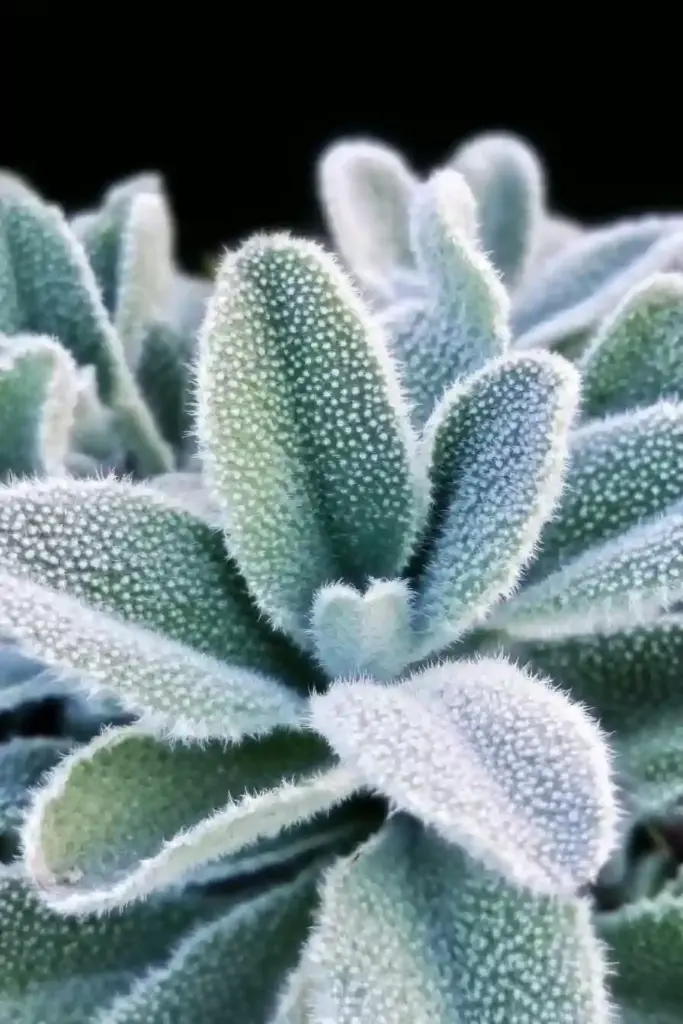
Lamb’s ear is just as charming as it sounds. With thick, velvety leaves in a silvery-green hue, this fast-spreading perennial forms a low, dense mat that weeds simply can’t penetrate. Its unique texture adds visual and tactile interest to garden beds, borders, or pathways—and even when it’s not blooming, it still steals the show.
While it does produce soft lavender flower spikes in summer, most gardeners love lamb’s ear for its foliage alone. And the best part? It’s nearly carefree once established.
🌞 Planting Tips for Lamb’s Ear:
- Sun exposure: Full sun to part shade
- Soil: Well-draining; tolerates dry, sandy soil
- Water needs: Low; drought-tolerant once established
- Mature height: 6 to 12 inches
- Spread: 12 to 18 inches
Use lamb’s ear to edge walkways, fill dry spots, or complement bold-colored plants—it’s the ultimate soft and strong groundcover combo.
🌸 6. Creeping Thyme (Thymus serpyllum)

Creeping thyme is more than just pretty—it’s practical. This low-growing, fragrant herb creates a dense, aromatic carpet that’s ideal for sunny spots where you want to keep weeds in check. With tiny evergreen leaves and charming pink or purple blooms, creeping thyme doubles as a groundcover and pollinator magnet.
It’s tough enough to handle foot traffic, making it perfect for planting between stepping stones, along pathways, or as a lawn alternative. Plus, every step releases a lovely herbal scent—gardening with aromatherapy built right in!
🌞 Planting Tips for Creeping Thyme:
- Sun exposure: Full sun
- Soil: Well-draining; thrives in poor or rocky soils
- Water needs: Low to moderate
- Mature height: 2 to 4 inches
- Spread: 12 to 18 inches
Let creeping thyme take over trouble spots where grass won’t grow—it’s beautiful, useful, and weeds don’t stand a chance.
🌾 7. Liriope (Liriope spicata)
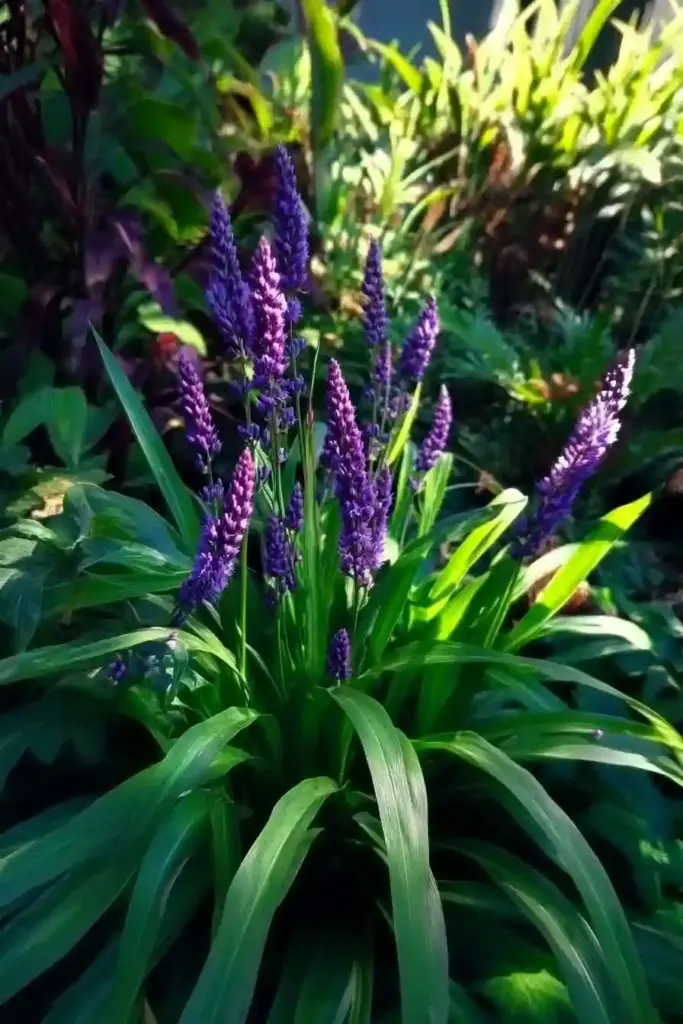
Commonly known as monkey grass, liriope is a go-to solution for gardeners seeking a fast-growing, weed-smothering groundcover that thrives just about anywhere. Its grass-like leaves form dense, arching clumps that spread steadily—making it perfect for controlling erosion, filling awkward shady corners, or replacing traditional turf.
In late summer, liriope surprises with slender spikes of purple or white flowers, followed by small black berries that add a bit of seasonal interest. Whether in full sun or full shade, this resilient perennial holds its own.
🌞 Planting Tips for Liriope:
- Sun exposure: Full sun to full shade
- Soil: Very adaptable; prefers well-drained soil
- Water needs: Moderate; tolerates brief dry spells
- Mature height: 10 to 15 inches
- Spread: Spreads indefinitely via underground rhizomes
Plant it under trees, along walkways, or on difficult slopes—liriope is a hardworking plant that creates a weed-resistant mat wherever it grows.
🌿 8. Comfrey (Symphytum spp.)
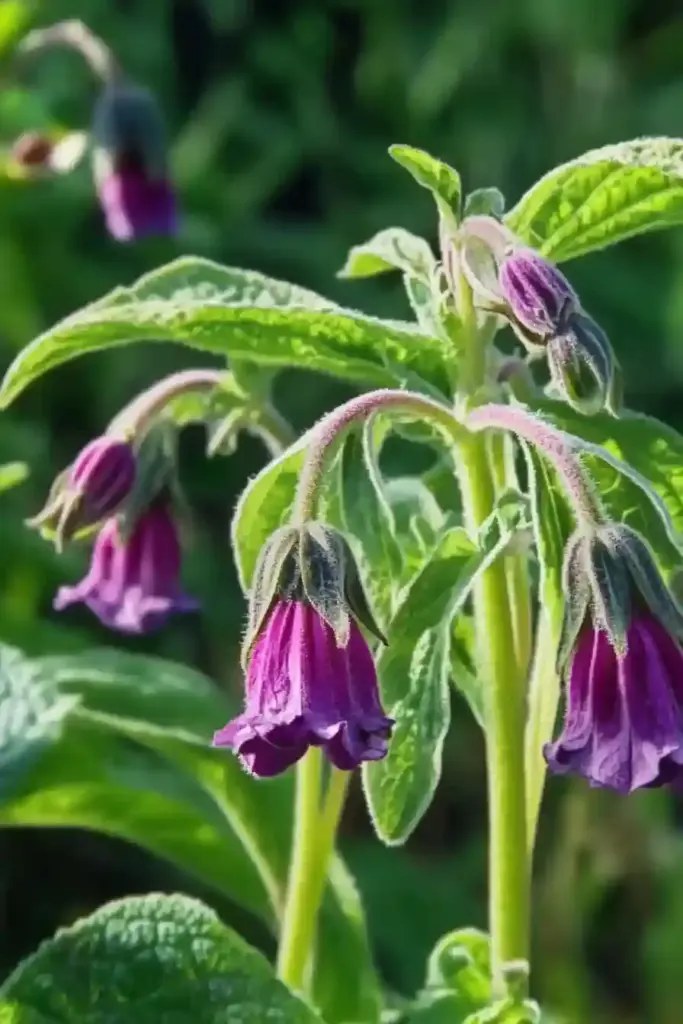
Comfrey is a fast-growing, nutrient-rich perennial that pulls double duty in the garden. With its large, leafy foliage and rapid growth, it effectively shades the soil and suppresses weeds, especially in problem areas where other plants struggle. Its deep taproot helps break up compacted soil and brings nutrients to the surface—making it a favorite in permaculture gardens.
While comfrey can be a bit aggressive, it’s incredibly valuable as a living mulch, compost booster, and bee-friendly bloomer. Its bell-shaped flowers attract pollinators, and the leaves can even be used to make natural fertilizer.
🌞 Planting Tips for Comfrey:
- Sun exposure: Full sun to part shade
- Soil: Adaptable; prefers nutrient-rich soil
- Water needs: Moderate
- Mature height: 2 to 4 feet
- Spread: 2 to 4 feet
Comfrey is best planted where it can roam freely—like in a composting zone, food forest, or wild garden border.
💙 9. Periwinkle (Vinca minor)
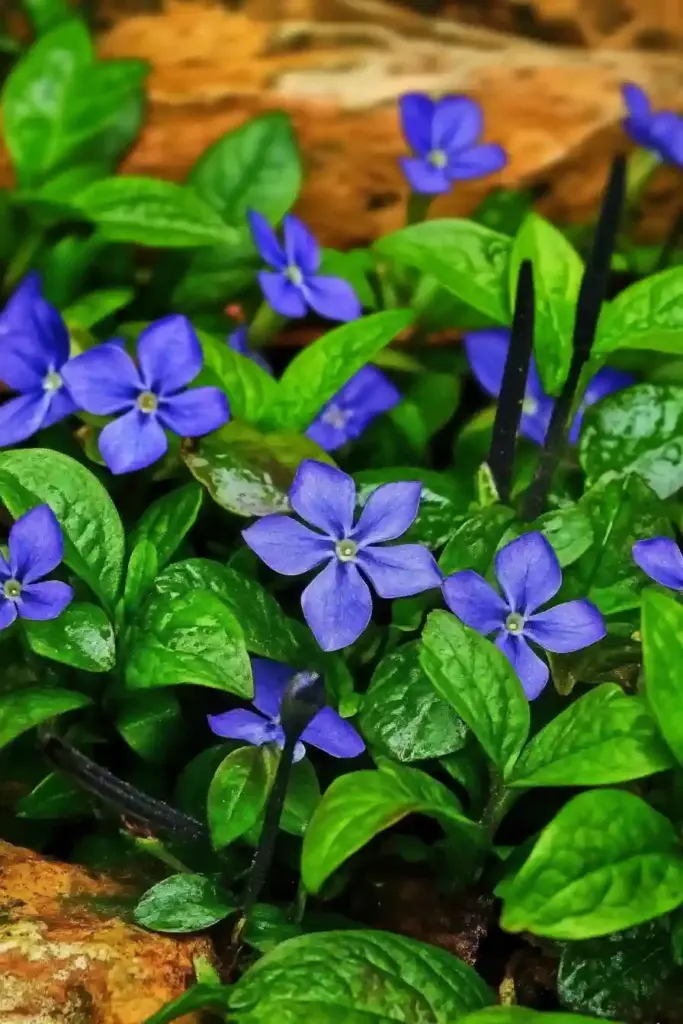
Also known as vinca, periwinkle is a fast-spreading, evergreen groundcover that’s perfect for shady areas where grass struggles. Its glossy, dark green leaves form a dense mat that quickly covers bare ground, choking out weeds before they even get a chance to take root.
In spring, it’s sprinkled with cheerful blue or purple flowers that brighten up even the gloomiest corners of the yard. Thanks to its trailing stems that root as they grow, periwinkle spreads effortlessly—making it ideal for woodland gardens, under trees, or along shaded slopes.
🌞 Planting Tips for Periwinkle:
- Sun exposure: Part shade to full shade
- Soil: Well-draining; tolerates various soil types
- Water needs: Moderate; drought-tolerant once established
- Mature height: 4 to 6 inches
- Spread: Spreads indefinitely
If you need an attractive, low-maintenance groundcover for shady problem spots, periwinkle delivers—no weeds invited.
🌾 10. Yarrow (Achillea millefolium)
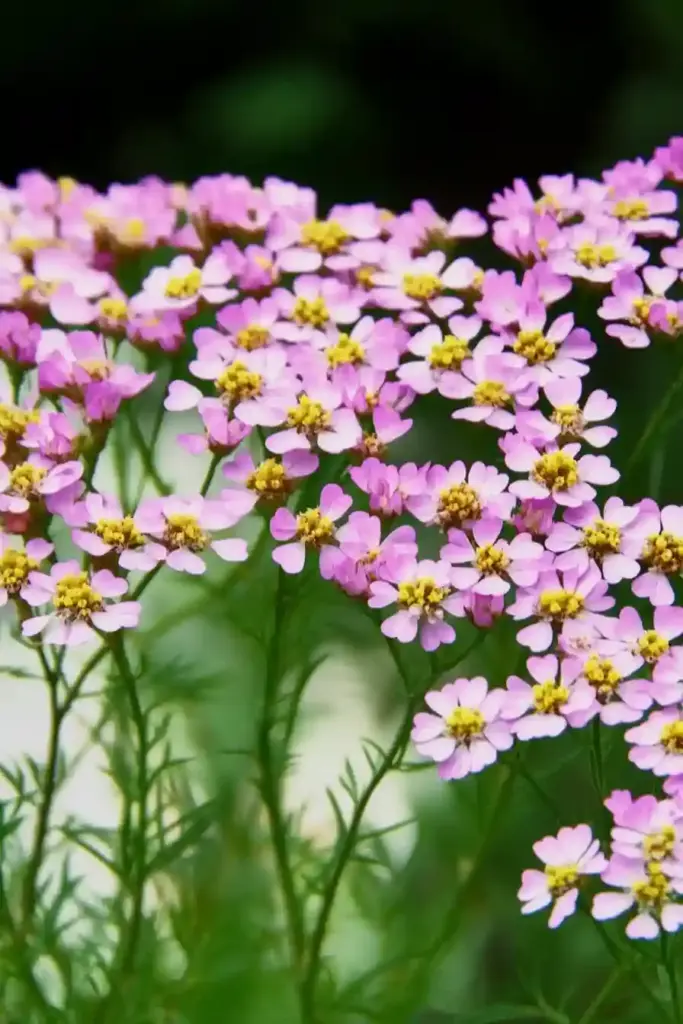
Yarrow is a resilient perennial that thrives in dry, sunny spots and asks for very little in return. Its fern-like, feathery foliage forms dense clusters that naturally crowd out weeds, while its flat-topped flower heads bloom in vibrant shades of yellow, pink, red, or white.
This plant isn’t just beautiful—it’s also a magnet for pollinators and beneficial insects. Yarrow spreads steadily via rhizomes, making it a reliable ground-filler in hard-to-grow areas. Once established, it handles drought and poor soil like a pro.
🌞 Planting Tips for Yarrow:
- Sun exposure: Full sun
- Soil: Well-draining; tolerates poor, sandy soils
- Water needs: Low; drought-tolerant
- Mature height: 2 to 3 feet
- Spread: 2 to 3 feet
Use yarrow in wildflower gardens, sunny borders, or anywhere you want long-lasting color and fewer weeds to worry about.
🌸 11. Creeping Phlox (Phlox subulata)
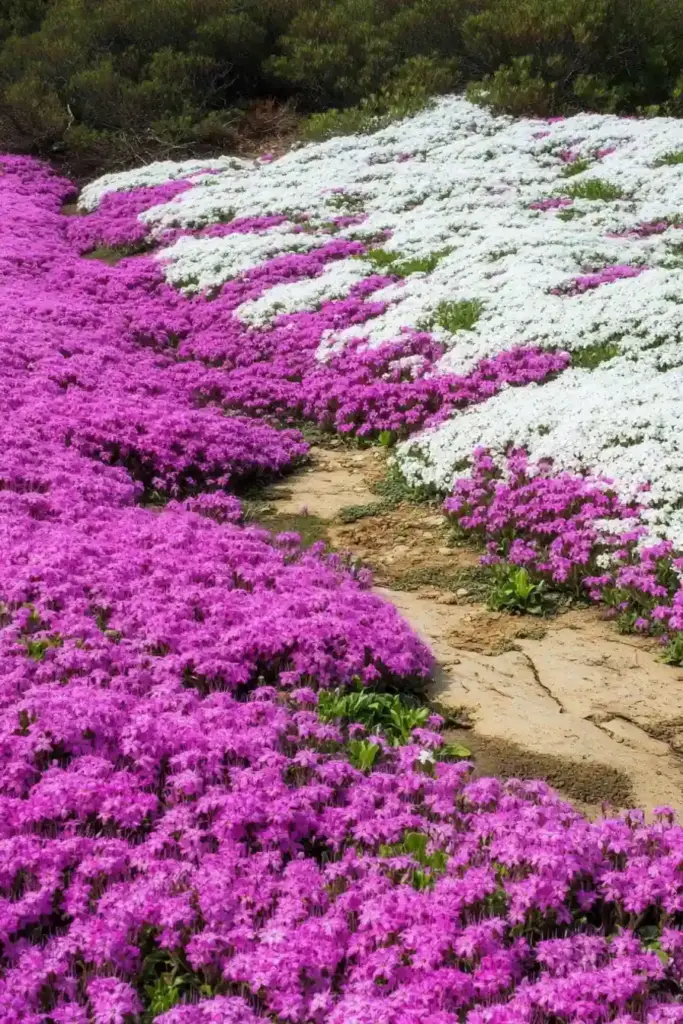
Creeping phlox is a low-growing, mat-forming perennial that bursts into a vibrant carpet of color each spring. Its needle-like foliage hugs the ground year-round, creating a dense cover that weeds can’t compete with. Once in bloom, it turns slopes, borders, and rock gardens into a sea of pink, purple, white, or blue.
This perennial thrives in sunny spots and is especially useful for erosion control or filling gaps between stones. Even when it’s not flowering, its evergreen foliage adds texture and helps keep weeds at bay.
🌞 Planting Tips for Creeping Phlox:
- Sun exposure: Full sun to part shade
- Soil: Well-draining; prefers slightly sandy or rocky soils
- Water needs: Moderate; drought-tolerant once established
- Mature height: 4 to 6 inches
- Spread: 12 to 24 inches
Plant it along pathways, in raised beds, or on sunny slopes to enjoy a splash of spring color and a weed-resistant groundcover all in one.
💛 12. Lady’s Mantle (Alchemilla mollis)
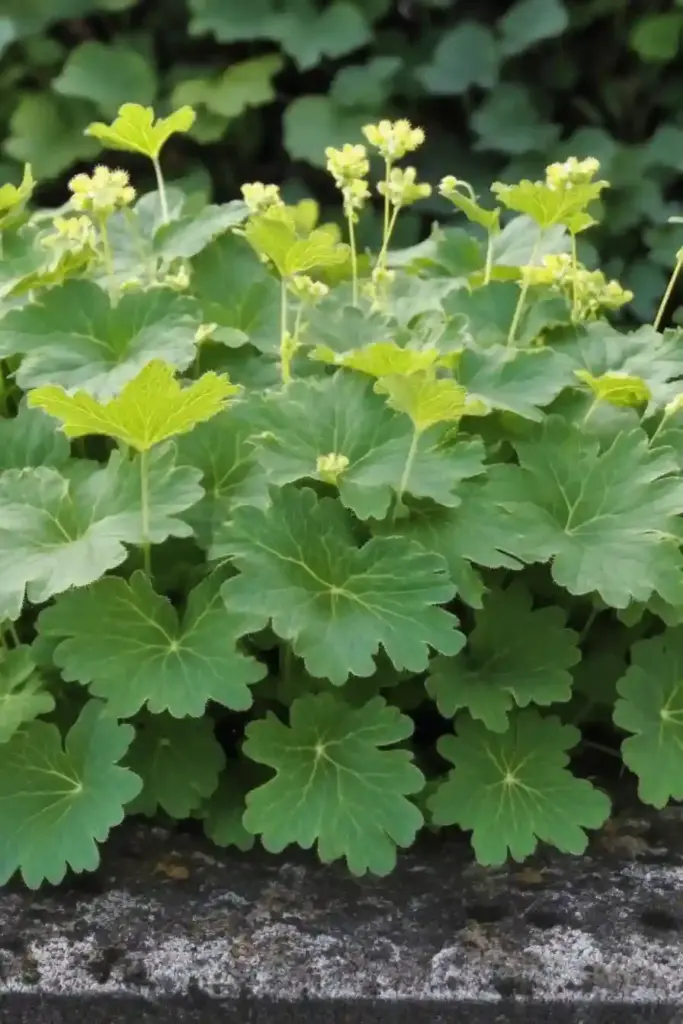
Lady’s mantle is a graceful, fast-growing perennial known for its soft, scalloped leaves that hold dewdrops like little jewels. Its mounded habit and broad foliage make it excellent for shading the soil and preventing weeds from sprouting. In early summer, it produces frothy clusters of yellow-green flowers that pair beautifully with other blooms in the garden.
This plant is beloved for its low-maintenance nature and ability to thrive in a variety of conditions. Whether used in borders, cottage gardens, or shade beds, it offers a lush look with very little effort.
🌞 Planting Tips for Lady’s Mantle:
- Sun exposure: Full sun to part shade
- Soil: Well-draining; tolerates poor or heavy soil
- Water needs: Moderate
- Mature height: 12 to 18 inches
- Spread: 18 to 24 inches
Lady’s mantle is a perfect companion plant for roses, a groundcover for shady spots, or a charming filler along garden paths where it gently sprawls and blocks weeds naturally.
💜 13. Bugleweed (Ajuga reptans)
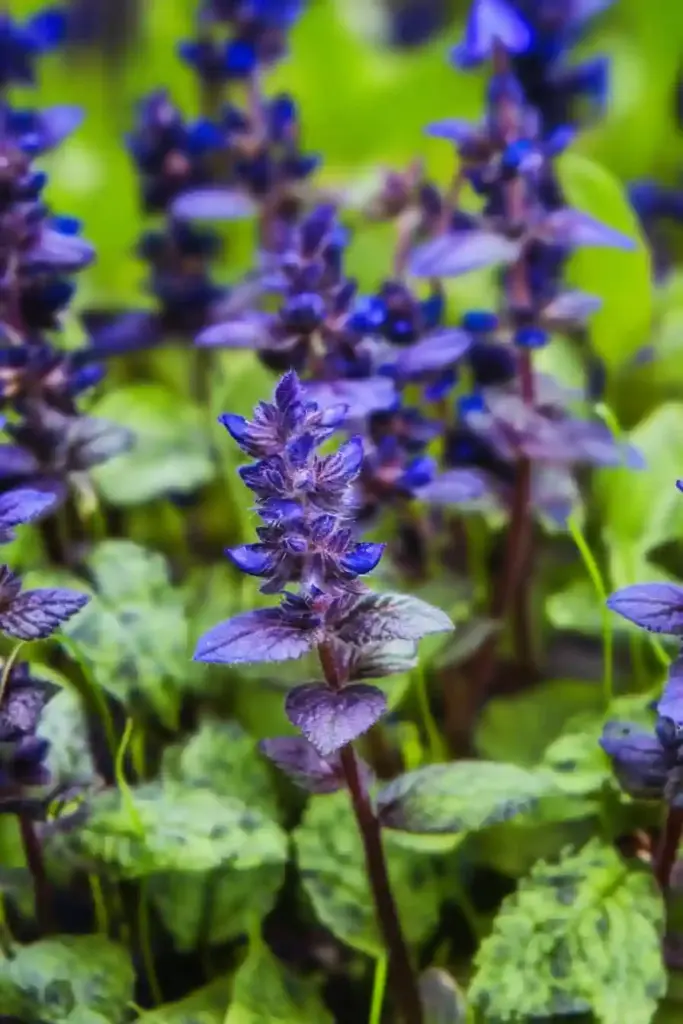
Bugleweed, or ajuga, is a fast-spreading perennial groundcover that thrives where many other plants won’t—including dense shade. Its glossy, often multicolored foliage (ranging from deep green to bronze or even purple) adds rich texture to shady beds and under trees. Come spring, it shoots up short spikes of vivid blue flowers, creating a carpet of color that pollinators love.
Ajuga spreads via runners that root as they grow, forming a tight mat that blocks out sunlight and smothers weeds. It’s especially useful in areas where grass struggles or erosion is an issue.
🌞 Planting Tips for Bugleweed:
- Sun exposure: Full sun to full shade (best color in partial shade)
- Soil: Well-draining; tolerates poor or clay soils
- Water needs: Moderate
- Mature height: 4 to 6 inches
- Spread: 12 to 18 inches (or more over time)
Use bugleweed to unify shady garden beds, fill in around shrubs, or replace turf in low-light zones—it’s low-maintenance and incredibly effective at crowding out weeds.
🍂 14. Coral Bells (Heuchera spp.)
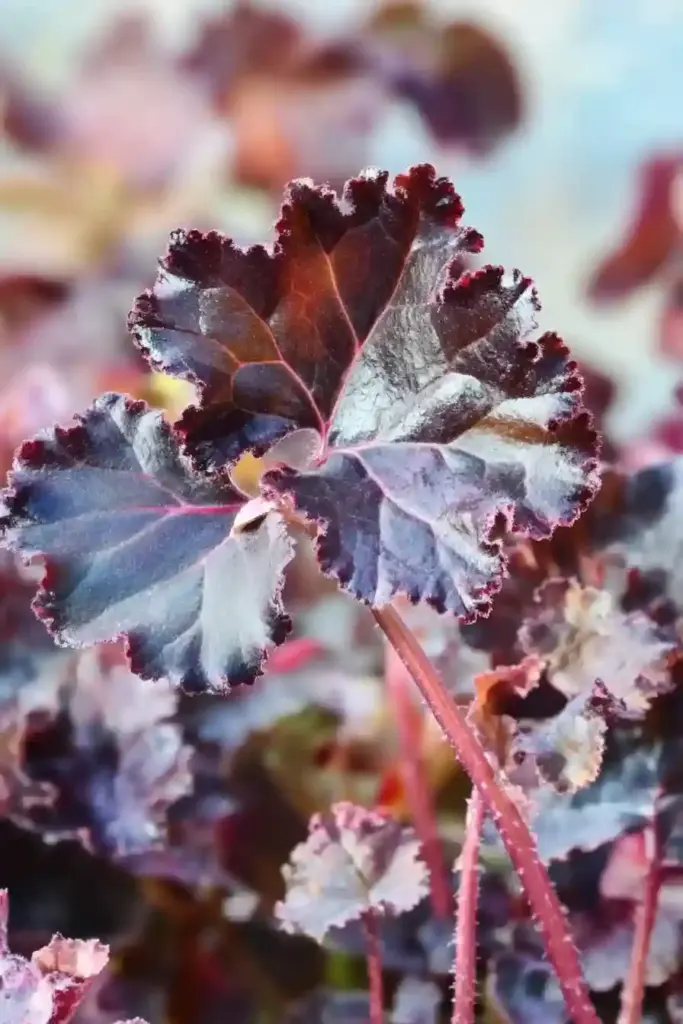
Coral bells, also known as heuchera, are prized for their dazzling foliage that comes in shades of burgundy, lime green, silver, caramel, and more. While their delicate flower spikes attract hummingbirds and pollinators in late spring, it’s their dense, mounding leaves that do the heavy lifting when it comes to weed suppression.
These perennials thrive in both sun and shade, making them an excellent choice for filling out mixed borders, shady pathways, or even container gardens. Once established, their clumping habit creates a beautiful, weed-resistant patch of color all season long.
🌞 Planting Tips for Coral Bells:
- Sun exposure: Full sun to part shade (prefers some afternoon shade in hot climates)
- Soil: Well-draining; prefers rich, organic soil
- Water needs: Moderate
- Mature height: 8 to 18 inches
- Spread: 12 to 24 inches
Mix different varieties for a mosaic of color, or use them to edge beds with elegant foliage that keeps weeds at bay and garden beds looking fresh.
🌿 15. Japanese Spurge (Pachysandra terminalis)
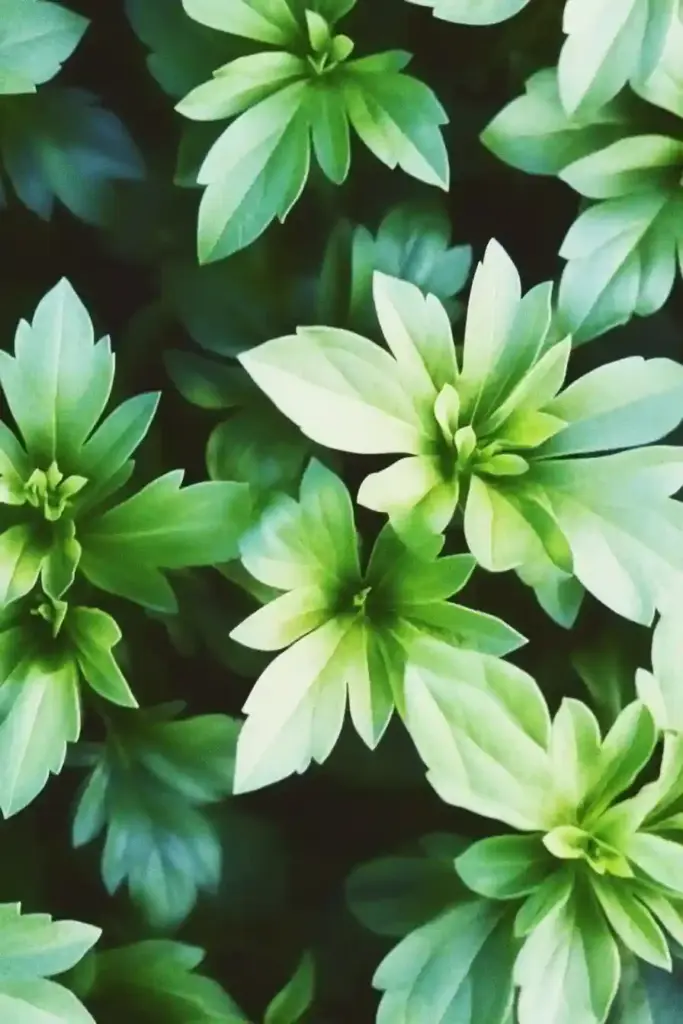
Japanese spurge is a classic evergreen groundcover that excels in deep shade where little else will grow. With its glossy green leaves and spreading habit, it forms a dense, weed-blocking carpet that stays attractive all year long.
This low-maintenance perennial is ideal for woodland gardens, under mature trees, or as a lawn alternative in shady areas. Once established, it spreads steadily by underground stems, filling in bare patches and preventing weeds from taking hold—no mowing required!
🌞 Planting Tips for Japanese Spurge:
- Sun exposure: Part shade to full shade
- Soil: Rich, well-draining
- Water needs: Moderate
- Mature height: 6 to 12 inches
- Spread: Spreads indefinitely via rhizomes
For lush, weed-free groundcover in dark corners of your landscape, Japanese spurge is a dependable and timeless choice.
🌟 Conclusion: Let Fast-Growing Perennials Do the Work for You
If you’re tired of spending weekends battling weeds, it’s time to let nature lend a hand. By planting a mix of these fast-growing perennials, you can create a thriving, low-maintenance garden that stays lush and weed-resistant all season long. Whether you’re working with sun-drenched slopes, shady corners, or everything in between, there’s a perennial on this list that’s perfect for your space.
Not only do these plants reduce weeding time, but they also add beauty, attract pollinators, and improve soil health. So, why not trade in your hoe for a few of these hard-working groundcover heroes? Your garden—and your back—will thank you.
🌿 Love gardening inspiration? Follow me on Pinterest for bold plant ideas, tips, and seasonal color!
More Posts
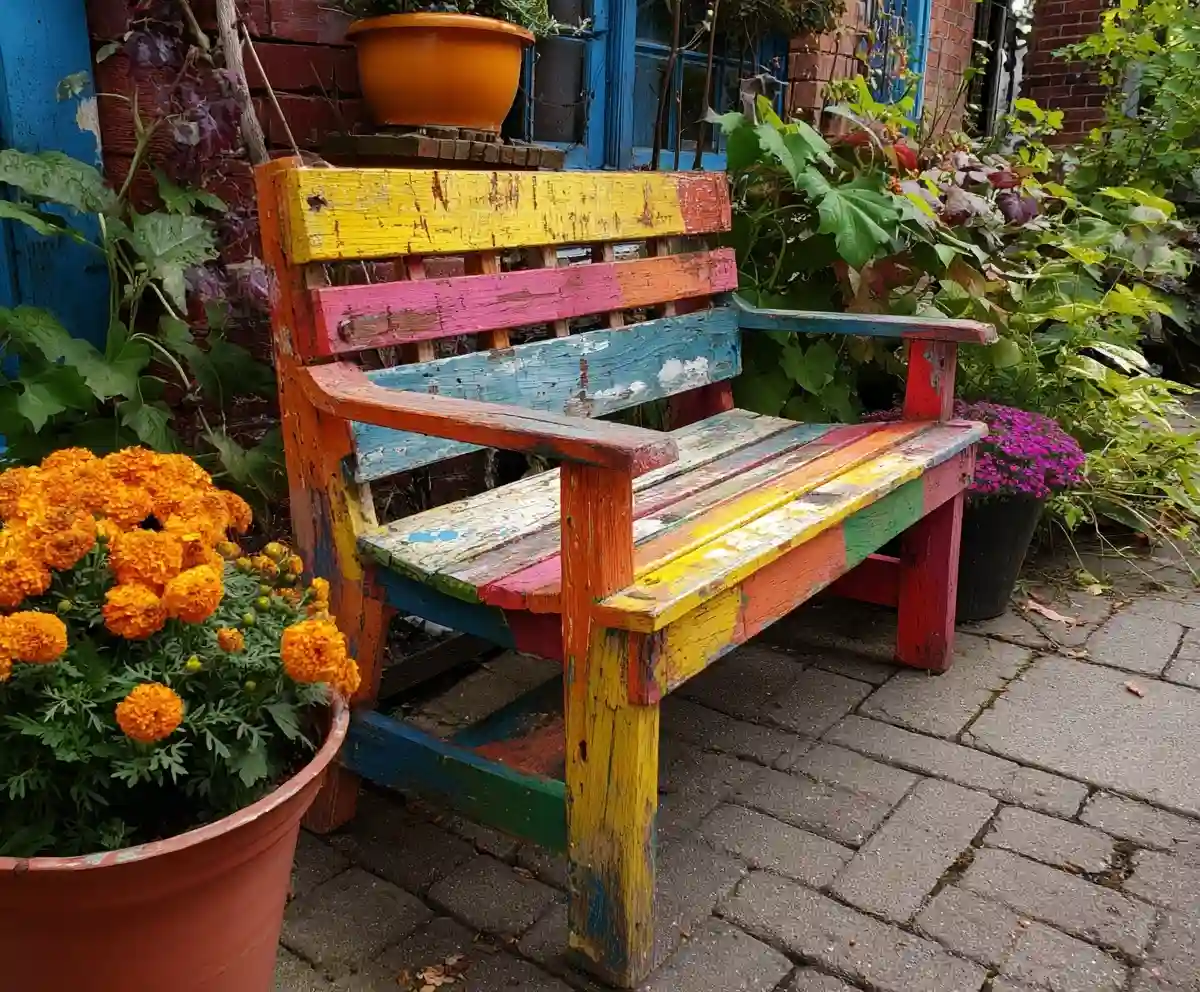
19+ Budget-Friendly Backyard Makeover Ideas
Backyard makeover ideas can turn even the most ordinary outdoor space into a warm, inviting retreat—without draining your wallet.
Read More →
21 Stunning & Simple DIY Clematis Trellis Designs
DIY clematis trellis designs are a beautiful way to blend creativity with function in your garden.
Read More →
12 Full Sun Perennials That Bloom All Summer
Explore a selection of hardy perennials that flourish and bloom beautifully in full sun throughout the summer.
Read More →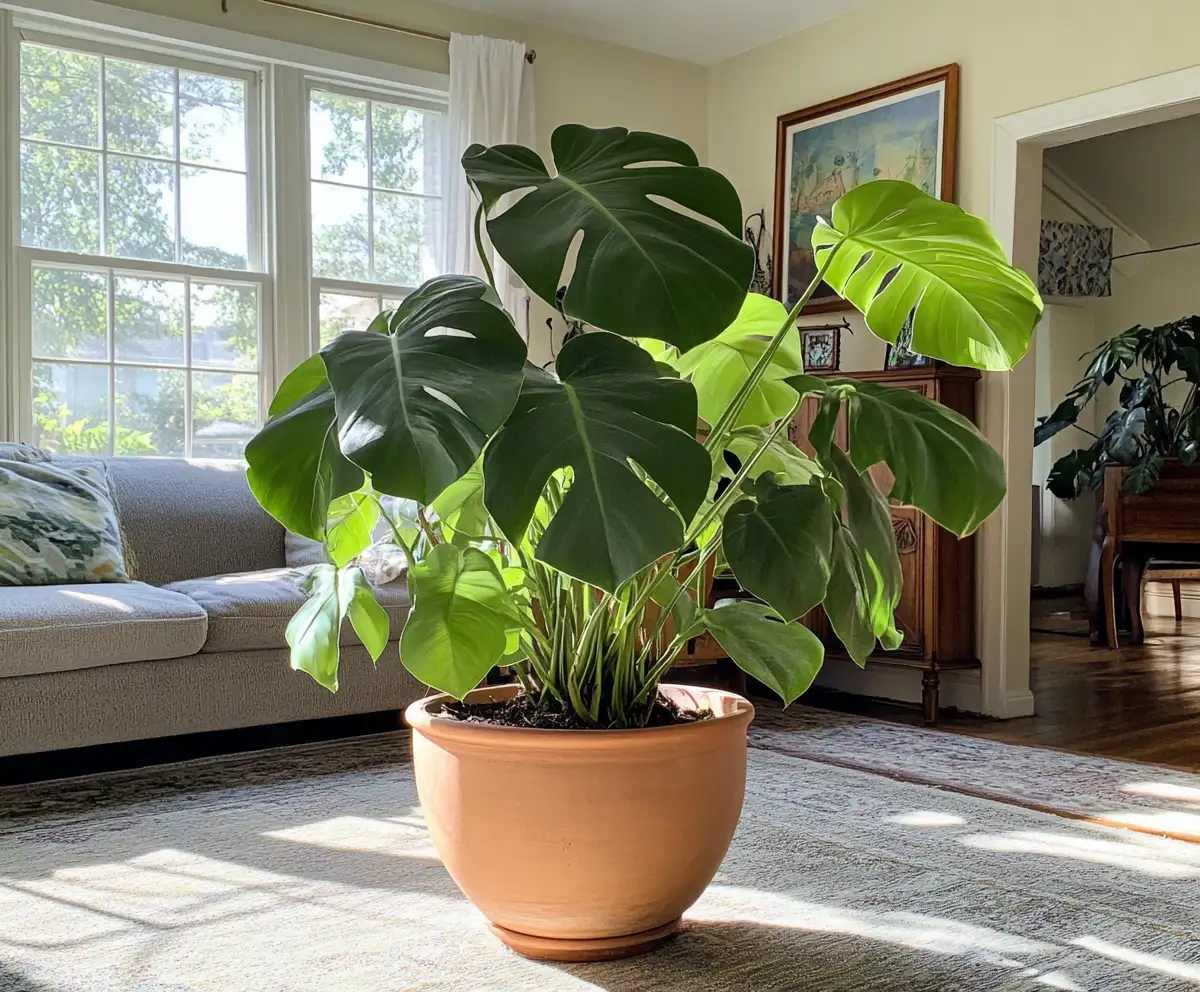
Houseplants for Living Room
Find the perfect houseplants to brighten and purify your living room while adding a touch of nature indoors.
Read More →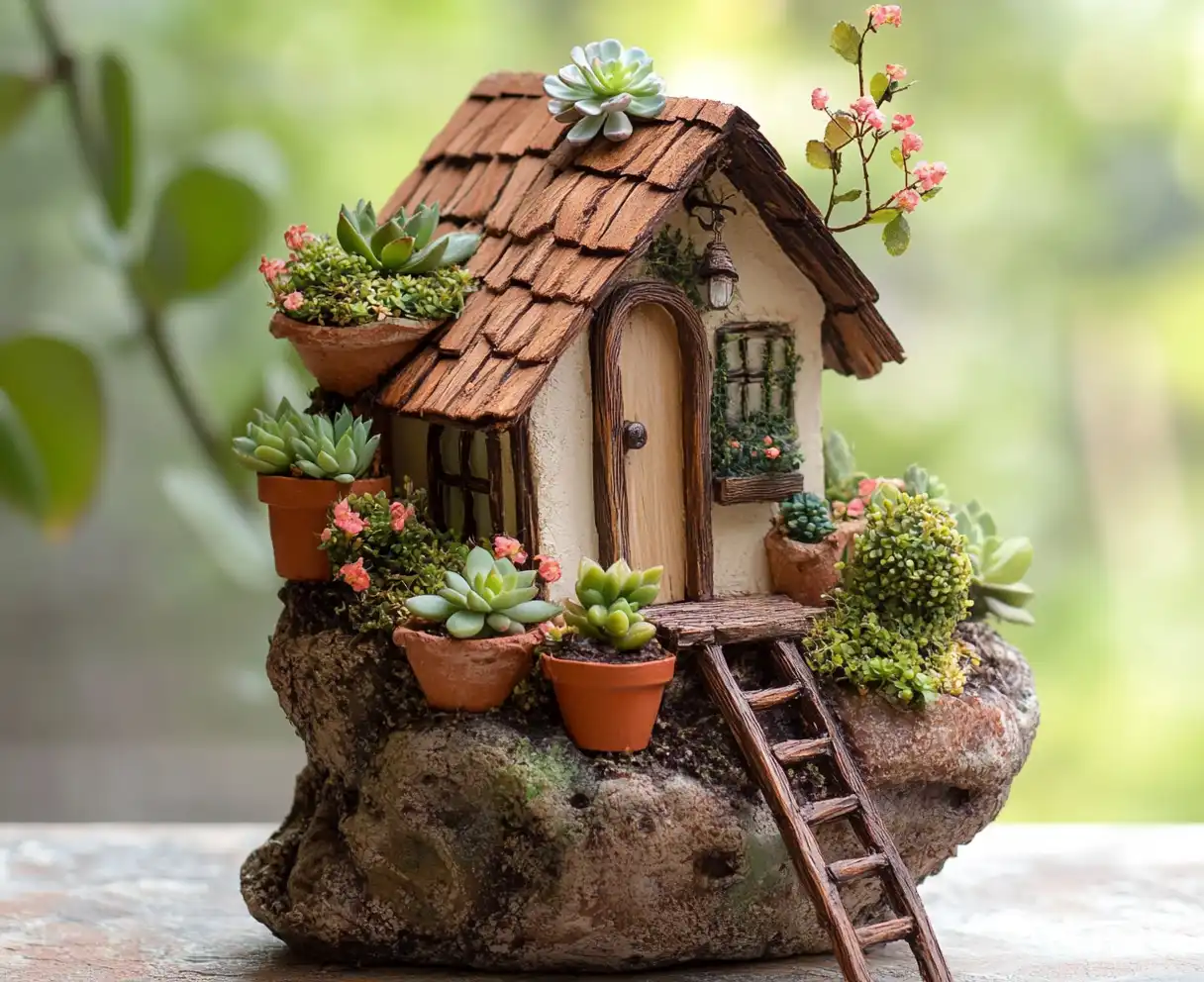
Backyard Play Area for Kids
Create a fun and safe backyard play area for kids with these inspiring design ideas and tips.
Read More →
Top Privacy Trees
Discover top tree varieties that provide natural privacy and enhance your outdoor space.
Read More →
